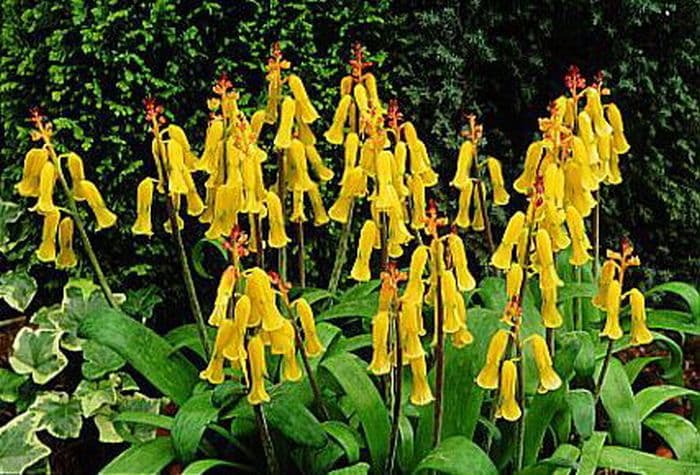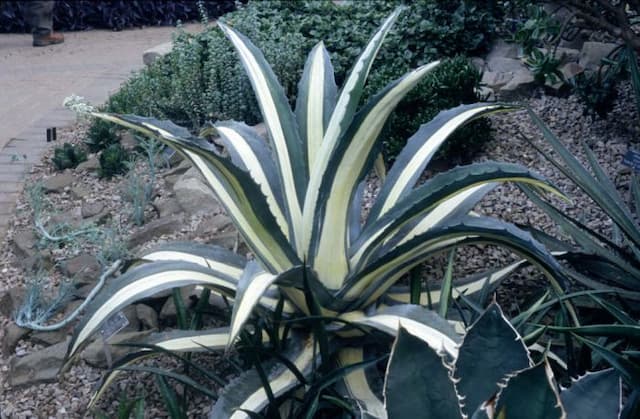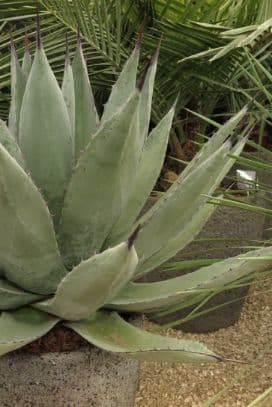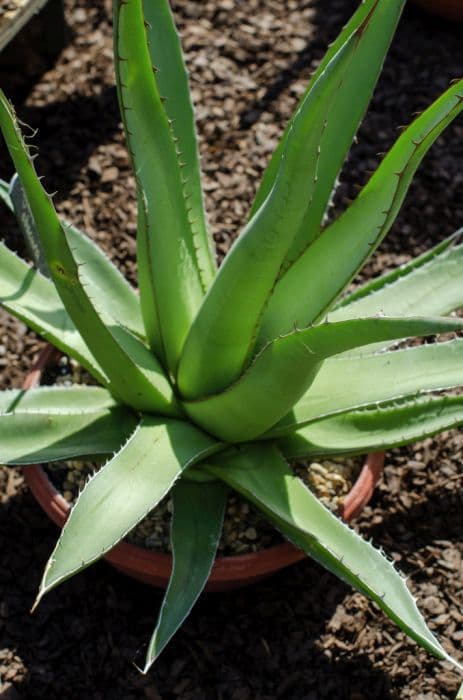Yellow Cape Cowslip Lachenalia flava

ABOUT
Lachenalia flava, also known as Yellow Cape Cowslip, is an attractive bulbous plant that displays a striking visual appearance. This plant is characterized by its vibrant yellow flowers that grow in a raceme, which is a cluster of flowers along a central stalk. The flowers are tubular in shape and often have a greenish hue at the base, which enhances the overall allure of the yellow blooms. The foliage of Yellow Cape Cowslip consists of two to four strap-shaped leaves that are glossy and can have a spotted or plain texture. The color of the leaves typically ranges from bright green to sometimes having a bluish or purplish tinge. These leaves emerge gracefully from the base of the plant, curving gently as they spread outwards. The Yellow Cape Cowslip blooms mainly during the winter to spring months, offering a cheerful display when many other plants are dormant. Overall, this plant is appreciated for its colorful and cheerful blossoms that add a touch of brightness to gardens and indoor settings alike.
About this plant
 Names
NamesFamily
Asparagaceae
Synonyms
Cape Cowslip, Yellow Soldier
Common names
Lachenalia flava.
 Toxicity
ToxicityTo humans
Cape Cowslip (Lachenalia flava) does contain compounds that are toxic to humans if ingested. While it is often grown for its ornamental value, consuming any part of this plant can lead to symptoms including nausea, vomiting, diarrhea, and abdominal pain. It is important to handle this plant with care to avoid accidental ingestion, especially by children who might be attracted to its colorful flowers.
To pets
Cape Cowslip (Lachenalia flava) is also toxic to pets, including cats and dogs. Ingestion can cause similar symptoms as in humans, such as vomiting, diarrhea, and possibly drooling or abdominal pain. If a pet consume any part of this plant, it is advisable to seek veterinary care promptly to manage the symptoms effectively and prevent more severe health consequences.
 Characteristics
CharacteristicsLife cycle
Perennials
Foliage type
Deciduous
Color of leaves
Green
Flower color
Yellow
Height
0.5 feet (15 cm)
Spread
0.5 feet (15 cm)
Plant type
Bulb
Hardiness zones
8
Native area
South Africa
Benefits
 General Benefits
General Benefits- Aesthetic Appeal: Lachenalia flava, commonly known as Yellow Soldier, produces bright yellow flowers that can add a splash of color to gardens or indoor settings.
- Low Maintenance: Yellow Soldier does not typically require extensive care, making it suitable for gardeners of all skill levels.
- Drought Tolerance: Once established, Lachenalia flava can tolerate periods of low water, making it ideal for water-wise gardens.
- Seasonal Interest: With its winter to early spring blooming period, it provides floral interest during a time when many plants are dormant.
- Container Gardening: Due to its compact size, it is well-suited for growing in pots, which allows for versatile placement in outdoor spaces.
- Attracts Pollinators: The vibrant flowers attract bees and other pollinators, supporting local ecosystems.
- Bulb Propagation: It can be propagated from bulbs, allowing gardeners to easily increase their stock or share with others.
 Medical Properties
Medical PropertiesThis plant is not used for medical purposes.
 Air-purifying Qualities
Air-purifying QualitiesThis plant is not specifically known for air purifying qualities.
 Other Uses
Other Uses- Lachenalia flava, also known as yellow soldier, can be used in educational settings such as biology or horticulture classes to study geophyte growth patterns and bulb development.
- The vibrant yellow flowers of yellow soldier can be used in botanical art classes as a subject for drawing, painting, or photography, highlighting plant structure and color.
- This plant's bulbs can be used in experiments to demonstrate vegetative propagation, as they can be divided to create new plants.
- The yellow soldier can be used in landscaping as a natural seasonal indicator since it flowers in early spring, signaling the end of winter in temperate climates.
- Incorporating Lachenalia flava into themed garden designs, such as a 'yellow garden' or 'spring garden', can showcase seasonal color variations.
- The plant can be a part of water-wise gardening practices in regions where water conservation is necessary because of its low water requirements once established.
- Lachenalia flava can serve as an indicator species for horticulturists wanting to test soil conditions, as it prefers well-drained, sandy soil and moderate water.
- The plant can be used in container gardening to bring early spring color to balconies, patios, or indoors, given appropriate growing conditions.
- Culinary artists might use the flowers of yellow soldier as an ornamental, non-toxic garnish for dishes, although they are not known to be edible.
- Beekeepers might value Lachenalia flava for its early blooming period, providing an early source of nectar for bees as they become active in the spring.
Interesting Facts
 Feng Shui
Feng ShuiThe plant Lachenalia is not used in Feng Shui practice.
 Zodiac Sign Compitability
Zodiac Sign CompitabilityThe plant Lachenalia is not used in astrology practice.
 Plant Symbolism
Plant Symbolism- Rare Beauty: Lachenalia flava, commonly known as the Cape Cowslip, possesses a unique charm not commonly found in more traditional flowers. Its few, yet striking, yellow blooms symbolize the beauty of rarity and individuality.
- Resilience: Native to rocky outcroppings in South Africa, the Cape Cowslip thrives in challenging environments, representing the ability to flourish under adversity.
- Renewal: As a bulbous plant that emerges after a period of dormancy, the Cape Cowslip signifies new beginnings and the renewal of life.
- Curiosity: The unusual appearance of the Cape Cowslip's flowers, with their vibrant color and intricate shape, can symbolize curiosity and the pursuit of knowledge, as they stand out and draw attention.
 Water
WaterCape Cowslip should be watered thoroughly, allowing the soil to become moderately dry between waterings. During the active growing season, typically from fall to spring, water the plant every 1 to 2 weeks, applying approximately 8-16 ounces of water depending on the pot size. Reduce watering after the leaves begin to die back, as the plant enters a dormant period in late spring and summer. During dormancy, water sparingly, only enough to prevent the soil from completely drying out.
 Light
LightCape Cowslip thrives best in bright, indirect light. A spot near a south-facing window with sheer curtains or an east-facing window that provides some morning sun and afternoon shade would be ideal. Avoid placing it in direct, harsh sunlight as it may scorch the leaves.
 Temperature
TemperatureCape Cowslip prefers moderate temperatures ranging between 60-70 degrees Fahrenheit during active growth. It can survive minimum temperatures down to about 50 degrees Fahrenheit and maximum temperatures up to about 80 degrees Fahrenheit. Avoid exposing the plant to temperatures below 50 degrees Fahrenheit for prolonged periods as it may damage the foliage.
 Pruning
PruningPruning Cape Cowslip is generally not necessary aside from removing spent flowers or yellowing leaves. The best time to clean up the plant is after flowering or when the leaves start to die back. Prune sparingly to maintain a healthy plant, usually once the blooming period is over.
 Cleaning
CleaningAs needed
 Soil
SoilThe Cape Cowslip prefers a well-draining soil mix composed of two parts sand and one part peat or loam. The ideal soil pH for this plant is slightly acidic to neutral, ranging from 6.0 to 7.0. To enhance drainage, incorporating perlite or pumice can be beneficial for the Cape Cowslip.
 Repotting
RepottingCape Cowslip should be repotted every two to three years after it finishes blooming and begins to enter dormancy. Repotting should be done during late summer or early fall, giving the plant a fresh growing medium and more space to grow.
 Humidity & Misting
Humidity & MistingCape Cowslip thrives in moderate humidity conditions; however, it can tolerate lower levels of humidity typical of indoor environments. The best humidity level for this plant is around 40-50%.
 Suitable locations
Suitable locationsIndoor
Place Cape Cowslip in bright, indirect light indoors.
Outdoor
Grow Cape Cowslip in partial shade outdoors, protect from frost.
Hardiness zone
8-10 USDA
 Life cycle
Life cycleThe life cycle of Lachenalia flava, commonly known as Yellow Cape Hyacinth, begins with seed germination, which occurs in autumn after the seeds are dispersed. The seedlings develop a bulb which will lie dormant underground during the dry summer months. In the following autumn to winter, the bulb sends up shoots and leaves, and the plant enters a vegetative growth phase. This is followed by the flowering stage in late winter to spring, when Lachenalia flava produces yellow, sometimes green-spotted flowers. After pollination, typically by bees, the flowers develop into capsules containing seeds. Once the seeds mature, the capsules open and the seeds are released to start a new cycle, after which the above-ground parts of the plant die back and the bulb enters dormancy again until the next autumn.
 Propogation
PropogationPropogation time
Spring to Summer
The common way to propagate Cape Cowslip (Lachenalia flava) is by dividing the bulbs after the foliage has died back, typically in late summer to fall. To propagate by division, carefully lift the clump of bulbs from the soil using a garden fork, taking care not to damage the bulbs. Gently separate the bulbs by hand, ensuring each division has at least one growth point. Replant the bulbs immediately at a depth of around 3 inches (7.6 cm), spaced about 3 to 4 inches (7.6 to 10.2 cm) apart, in well-draining soil and in a location with bright, indirect light. Water the bulbs after planting to settle the soil around them. This method of propagation allows the plant to establish and produce a robust display of flowers in the following season.









